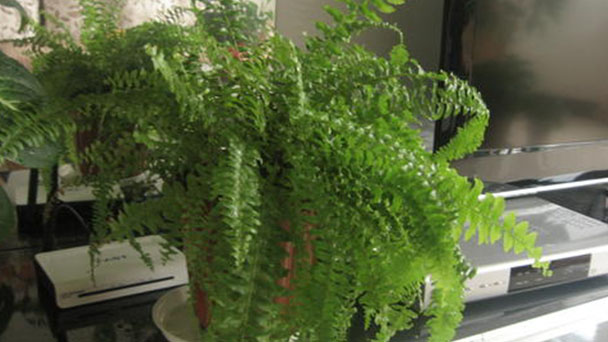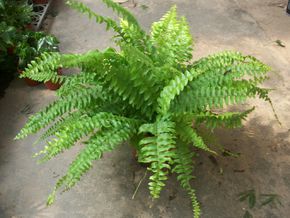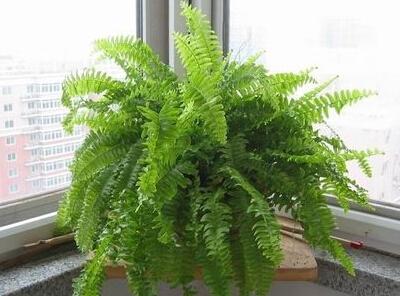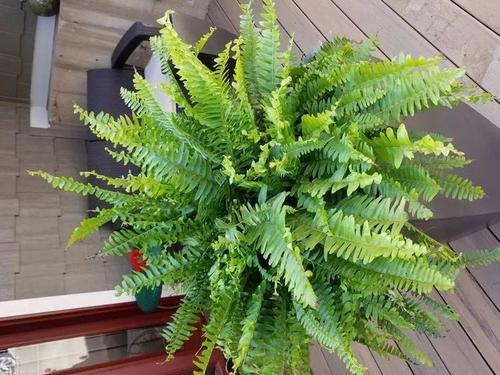Boston fern profile
Written by Maggie
Oct 20 2021

Boston Fern, scientific name Nephrolepis exaltata, also called sword fern, a perennial evergreen fern herb, is a kind of pendant fern foliage plant, native to the tropics and subtropics, distributed in the Taiwan Province of China.
Most ferns are planted shapes beautiful, pure and fresh quietly elegant. Boston Fern is no exception. In addition, Boston Fern's leaves are bright in color and light and elegant. When the breeze hits, the leaves swing slightly, like a dancer dancing.
Boston fern picture
Boston fern morphological characteristics
Boston fern belongs to the perennial evergreen fern herb. The rhizome is erect, with stolon. The leaves are fascicular, up to 60 cm long, with slender compound leaves, which are pendulous after spreading out. The leaves are double-pinnate and deeply lobed, and the base of the pinnules is auricular. Sporangia group semicircular, on the dorsum of leaves near leaf margin.
Boston fern is a kind of pendant fern leaf viewing plant, suitable for potted in indoor hanging ornamental, its creeping branches cut can be used as decorative materials.
The ecology of Boston fern
Boston fern likes a warm, moist and half shade environment, like ventilation, avoid heat.
Boston Fern is generally placed in the indoor bright scattered light culture, can not be exposed to strong light, but also can not be placed in the dark culture. The suitable temperature for growth is 15 ~ 25℃, and it can safely overwinter in winter above 10℃.
Boston Fern is drought tolerant, but it needs to be well hydrated, not too wet or dry, and keep the soil constantly moist. Summer water 1 ~ 2 times a day, often to the foliar water. The need for fertilizer is not much, every 4 weeks during the growing period of a thin cooked cake fertilizer, and should not use quick-effect chemical fertilizer, fertilization does not stain the leaves, so as not to damage.
Potted Boston Fern is suitable for the mixed culture soil of leaf rot soil, river sand and garden soil, and the growth will be better if the water moss is used as the medium. The pot will be changed once every other year in spring.
Boston Fern's distribution area
Boston fern origin of tropical and subtropical, in China's Taiwan Province distribution.
How to grow and care for Boston fern
Light
Boston Fern likes bright scattered light. In spring and summer, it should be placed indoors where there is bright scattered light. When the sunlight is strong, Boston fern should not be placed under direct sunlight, because the leaves will turn yellow when the sunlight is direct. Winter should be appropriate to increase the light, otherwise the leaf color will easily turn yellow or lead to leaf margin dry.
Water
Boston Fern likes wet conditions and requires high soil and air moisture. Because the roots of Boston Fern are adventitious and have poor water absorption and retention ability, they must be supplied with water in time, or if they are dried for a long time, the leaves will easily become yellow and fall off. Spring and summer basin soil should always keep wet, but can not water, should not be too wet, often keep basin soil wet state is better, in summer in addition to timely watering, but often to the foliar spray water. Reduce watering in winter when the room temperature is low and keep the soil slightly moist.
Fertilization
Boston Fern fertilization concentration should not be too high, otherwise it is easy to hurt the root, the best way of fertilization is in the basin (every other year in the spring for 1 time) to join the stable manure, in the growing season, and then with thin fertilizer topdressing. Fertilizer to avoid the fertilizer liquid-stained leaves, if accidentally stained, to immediately spray clean water.
Temperature
Boston Fern grows at an appropriate temperature of 15-25℃, and can safely overwinter in winter above 10℃.

Boston Fern propagation methods
Boston Fern can be propagated by dividing plants.
Boston Fern usually propagates by division. In the summer, the rootlets that grow from the creeping branches are cut from the growing plants and replanted.
Cut the rootlets from the stolons and plant them separately. Divided Boston fern pouring permeable, placed in the shade for a week or so, you can turn into the normal maintenance. Planting can be done in spring, summer or autumn.
Boston Fern does not produce sporophylls and can only propagate by ramets or stems. Planting year can be carried out, with spring and autumn as the best. After dividing the plant, pour water permeable, put Boston fern in the shade, which can quickly restore growth.
Boston fern commonly used plant division method propagation, the summer from the growth of vigorous plants cut the creeping branches on the root of the plant, can be planted separately.
Disease control in Boston fern
The main diseases of Boston fern are leaf spot and cataplexy.
The pests are mainly caused by caterpillars, scale insects, mealybugs and nematodes.
The main value of Boston fern
Adornment effect
Boston Fern, also known as high kidney fern, is a perennial evergreen fern herb. Boston fern is a kind of pendant fern leaf viewing plant, suitable for potted indoor hanging ornamental, and its crawling branches can be cut off as decorative materials.
Boston Fern's seedlings grow straight and erect, perfect for sitting on a desk, but when the leaves are long enough to hang down, Boston Fern is perfect for hanging up to decorate the air. (Find more best indoor hanging plants here.)
Purify air
Boston Fern is a variety of kidney fern. It is highly adaptable and has the function of absorbing formaldehyde exhaust gas. At the same time, Boston fern can inhibit the release of xylene and toluene in the computer monitor and printer.

Latest Updated
- Benefits of Bugleweed - 7 Science-backed Health Benefits
- Bugleweed Dangers & Side Effects - Is It Poisonous?
- How to Plant Evergreen Trees - What You Should Know
- When to Plant Evergreens - Grow Guide for Evergreen Trees
- 12 Wonderful Evergreen Shrubs for Your Garden
- 12 Popular Evergreen Plants with Pictures for Beginners
- When And How To Prune A Lilac Bush Like a Pro
- How to Grow & Care for Lilac Vine (Hardenbergia Violacea)
- Japanese Lilac Tree (Syringa Reticulata) Care & Propagation Guide
- Shumard Oak Pros and Cons - What to Know
Popular Articles
- Winter maintenance of Antirrhinum Majus
- How to Grow Terminalia Mantaly Tree
- How to Grow and Care for Crossostephium Chinense
- How to grow Antirrhinum Majus in spring
- Peristeria Elata (Dove Orchid) Profile: Info & Care Guide
- Underwatered Snake Plant (Sansevieria Trifasciata) - Signs And How To Fix
- How to Care for Brazilian Jasmine Plant (Mandevilla Sanderi)
- How to Grow & Care for Graptopetalum Purple Delight in Summer
- Rosa Chinensis (China Rose): Plant Growing & Care Tips
- How to Care for Baby Sun Rose (Aptenia Cordifolia)
